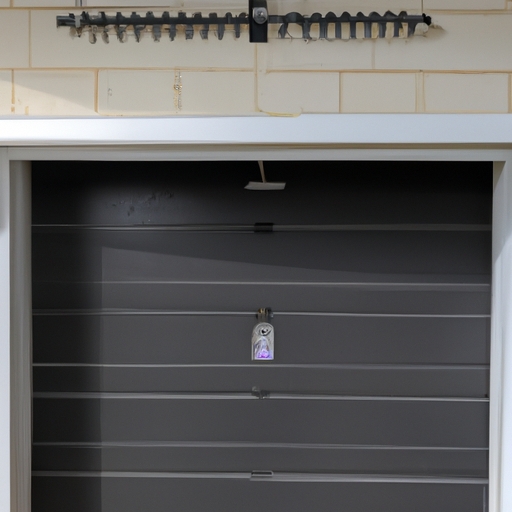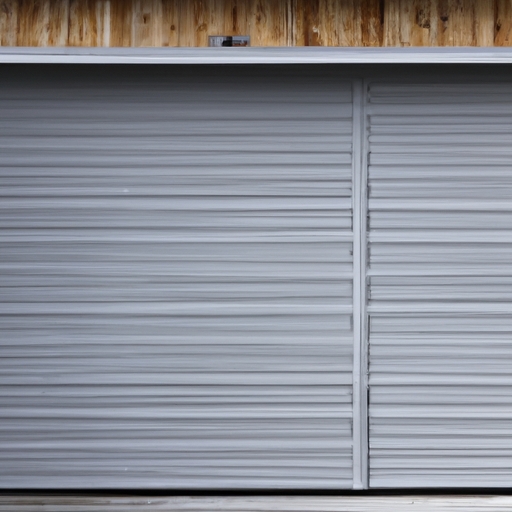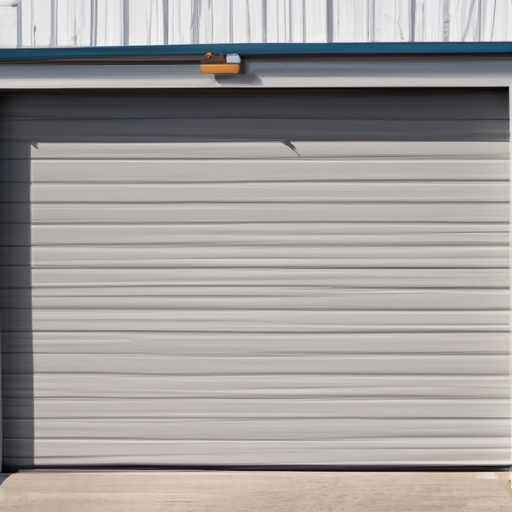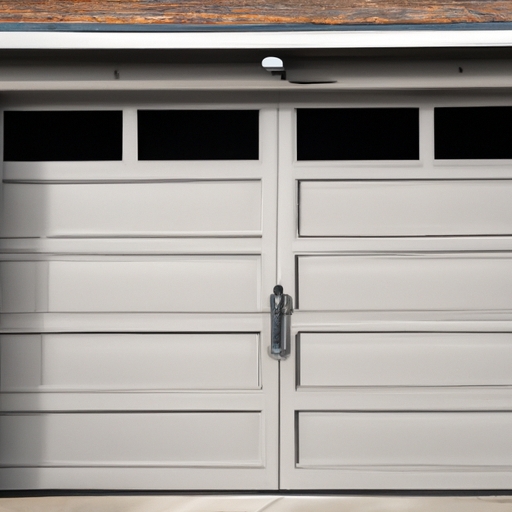
Understanding the importance of required skills and tools for DIY repairs is crucial for anyone who wants to (fix up) their own home or (perform maintenance on) their belongings. Without the necessary skills and tools, one may find themselves in a state of utter confusion and frustration! DIY repairs require a certain level of expertise and knowledge that cannot be achieved without proper training.
Firstly, it is essential to possess the right set of skills in order to successfully complete any DIY repair task. (Like), if you do not have a basic understanding of plumbing or electrical work, attempting to fix a leaky faucet or install new light fixtures can lead to disastrous consequences. The lack of knowledge can result in making mistakes that are costly to rectify. Therefore, acquiring the required skills through practice, research, or even by taking specialized courses is imperative.
In addition to having the necessary skills, utilizing the appropriate tools is equally important. (Now then), imagine trying to hammer a nail into a wall with a wrench! It would be an absolute nightmare! Having access to the correct tools ensures that you can carry out your DIY repairs effectively and efficiently. A comprehensive toolbox containing various types of hammers, screwdrivers, pliers, wrenches, and other essentials will enable you to tackle different repair tasks with ease.
Furthermore, neglecting the importance of acquiring these required skills and tools can lead to potential dangers and accidents. (Oh no!) Mishaps like electrocution or causing major structural damage are very real possibilities when attempting repairs without proper knowledge or using incorrect tools. Safety should always be a top priority when engaging in any DIY project.
To sum up,(in conclusion), understanding the significance of possessing the necessary skills and tools for DIY repairs cannot be emphasized enough. By obtaining these competencies and equipping yourself with appropriate tools, you ensure successful completion of your projects while minimizing risks involved. Remember: Practice makes perfect! So don't hesitate in expanding your skills and collecting the right tools to become a proficient DIY repairer.
Safety precautions are very important (in order) to avoid accidents during DIY repairs. Before starting the repair process, it is crucial to ensure that you have the required skills and tools. Neglecting these precautions can lead to serious injuries or damage (in addition) to your property. So, let's discuss some safety measures that one should consider before embarking on any DIY repair project.
Firstly, one should always wear protective gear such as safety glasses, gloves, and a helmet if necessary. (!) These will help protect your eyes from flying debris (!), prevent cuts or burns (!), and safeguard your head in case of any mishaps. Additionally, make sure to work in a well-ventilated area and keep fire extinguishers nearby (on hand). This will reduce the risk of inhaling harmful fumes (!) and allow you to quickly tackle any unexpected fires.
Furthermore, it is essential to familiarize yourself with the user manuals for all the tools you will be using. (!) Don't ignore this step as it provides vital information about proper usage and potential hazards associated with each tool (!). Using tools without proper knowledge may result in accidents or cause damage to both yourself and your equipment.
Moreover, never underestimate the importance of electrical safety when working on DIY repairs. Always unplug appliances or turn off circuit breakers before attempting any electrical repairs (to avoid) electric shocks (!), sparks, or even electrocution. Ensure that you use insulated tools specifically designed for electrical work (so as not) to conduct electricity.
In conclusion, taking safety precautions seriously is imperative when engaging in DIY repairs. By equipping yourself with the required skills and tools while following proper safety measures(!), you can minimize risks(!) and successfully complete your repair projects without endangering yourself or others(!). So remember: prioritize safety above everything else!
When it comes to replacing garage door springs, there are certain essential skills and tools that one must possess for successful DIY repairs. (Well, let me tell you!) Without these necessary requirements, attempting such a task can be quite challenging and potentially dangerous. So, let's delve into the required skills and tools for this particular job!
Firstly, it is imperative to have a solid understanding of the mechanics involved in operating garage doors. This means comprehending how the springs function and their role in balancing the weight of the door. Additionally, having knowledge of basic electrical systems (or lack thereof) can be highly beneficial when dealing with automated garage doors.
Furthermore, being able to work safely with heavy objects is crucial for a successful garage door spring replacement. (I mean seriously!) These springs are under immense tension and mishandling them can lead to severe injuries or property damage. Therefore, having good hand-eye coordination and physical strength is necessary to handle these components properly.
In terms of tools,(oh boy!) there are several that are absolutely indispensable for this type of repair. For starters,(you know what I mean?) a sturdy pair of gloves is essential to protect your hands from sharp edges or potential spring accidents. A set of pliers or vice grips will also come in handy for gripping and manipulating various parts during the replacement process.
Additionally,(by golly!) a winding bar specifically designed for torsion springs is an absolute must-have tool. This specialized tool allows you to safely wind or unwind the springs without risking injury.(don't even think about skipping this step!)
To summarize,(alrighty then...) successfully replacing garage door springs requires possessing essential skills such as understanding mechanical operations and working safely with heavy objects.(no doubt about it!) In addition,(now listen up!) having the right tools including gloves, pliers, vice grips, and winding bars is crucial for a smooth DIY repair process.(trust me on this!)
In conclusion,(let me tell you one more thing!) attempting a garage door spring replacement without the necessary skills and tools can be extremely risky and potentially disastrous. Therefore, it is essential to acquire the required knowledge and equipment before undertaking such a task.(don't even think about cutting corners!) So, remember to prioritize safety and take the time to educate yourself properly before embarking on any DIY repairs!(you got this!)
Replacing garage door springs can be a daunting task for many homeowners. However, with the right skills and tools, it is possible to successfully tackle this DIY repair project. In this step-by-step guide, we will walk you through the process (which) of replacing your garage door springs (!), ensuring that you have all the necessary information to complete the job safely and efficiently.
Before diving into the actual replacement process, let's discuss the required skills and tools for this task. Firstly, it is essential to have a basic understanding of mechanics and (the) functioning of garage doors. Additionally, familiarity with various hand tools such as wrenches, pliers, and screwdrivers is crucial (!). Without these fundamental skills, attempting to replace garage door springs could result in injury or further damage to your door system.
Now let's move on to the tools needed for this repair. You will need a set of winding bars (an), which are used to release tension from the old springs before removing them. A sturdy ladder is also necessary for accessing the overhead assembly (least) where the springs are located. Other important tools include safety goggles (!), gloves (!), and a tape measure for accurate measurements.
Once you have gathered all the required skills and tools mentioned above (!), it's time to begin replacing your garage door springs. Start by securing your ladder firmly in place underneath the area where the springs are situated (transition phrase). Then carefully remove any tension from both sides of your current spring system using winding bars (!). Afterward, disconnecting one end of each spring from its respective bracket should be done cautiously using pliers or a wrench.
Next, measure each spring precisely so that you can purchase new ones with matching dimensions (!). Once you have obtained suitable replacements, attach them securely onto their brackets using appropriate fasteners like bolts or screws (an). Finally, check that everything is properly aligned and balanced before testing out your newly installed garage door springs.
In conclusion, replacing garage door springs requires specific skills and tools to ensure a successful DIY repair. By following this step-by-step guide, you can confidently complete the task yourself (!), saving both time and money. Remember to prioritize safety throughout the process by using protective gear and exercising caution during each step. Now, armed with this knowledge, go forth and conquer your garage door spring replacement project!
When it comes to DIY repairs, having the right skills and tools is crucial. (Hey), you don't want to start a project only to realize (somethin') important is missing! So let's dive into the recommended tools for the job and their functions.
Firstly, one essential tool for any DIY repair is a screwdriver. This handy tool allows you to tighten or loosen screws with ease. It's important to have different sizes of screwdrivers, as screws come in various shapes and dimensions. Without a screwdriver, you'll find yourself struggling (for) hours trying to fix something simple!
Another must-have tool is a wrench. Wrenches are perfect for tightening or loosening bolts and nuts. They come in different types such as adjustable wrenches and socket wrenches. (Well), if you don't have a wrench, good luck trying to fix that leaky faucet or assemble that new furniture!
Now let's talk about safety equipment. Safety goggles are an absolute necessity when it comes to DIY repairs. You wouldn't want debris or chemicals getting into your eyes, would ya? Additionally, wearing gloves not only protects your hands from sharp objects but also provides better grip when handling tools.
Transition phrase: Moving on to power tools! These can make your DIY repairs much quicker and easier...
One power tool that should be in every DIY enthusiast's arsenal is a drill. With its rotating motion, drills help create holes in various materials like wood, metal, or concrete! Just make sure you're using the correct drill bit size for the job; otherwise, you might end up damaging your project!
Last but definitely not least is a multimeter. This handy device helps measure electrical current, voltage, and resistance. It's especially useful when dealing with electrical repairs or troubleshooting faulty circuits. Without a multimeter (at hand), diagnosing electrical issues can be like searching for a needle in haystack!
In conclusion, having the right skills and tools is essential for successful DIY repairs. The recommended tools for the job include screwdrivers, wrenches, safety equipment like goggles and gloves, power tools such as drills, and a multimeter for electrical work. So next time you embark on a DIY repair project, make sure you have these tools (on) your side!
When it comes to DIY repairs, having the necessary skills and tools is crucial. However, there are common mistakes that people often make (when they attempt to do these repairs themselves). These mistakes can lead to costly damages (and even injuries), so it's important to be aware of them (before embarking on any DIY project)!
One common mistake to avoid is underestimating the complexity of a repair. Many individuals assume that they can tackle any task without prior knowledge or experience (which is not always true!). This arrogance can result in further damage to the item being repaired (or even personal harm).
Another mistake is using incorrect tools for the job. Sometimes individuals try to save money by using makeshift or improvised tools instead of investing in proper equipment. Not only does this compromise the quality of the repair, but it can also cause accidents and delays.
Furthermore, neglecting safety precautions is a grave error when undertaking DIY repairs. People often disregard wearing protective gear such as goggles, gloves, or masks (ignoring their importance). Safety should always be a top priority! Failure to take necessary precautions may result in serious injuries or long-term health issues.
Transition phrase: On top of these common mistakes, rushing through a repair without proper planning and preparation is another pitfall to avoid. Many people underestimate the importance of taking time to analyze the problem at hand and formulate an effective plan before beginning any repair work.
Neglecting preparation leads to errors like missing steps or misjudging required materials. Without careful consideration beforehand, one might find themselves halfway into a project only to realize they lack essential supplies or have overlooked critical details.
In conclusion, DIY repairs require both adequate skills and appropriate tools. To ensure successful outcomes, it's essential to avoid common mistakes such as underestimating complexity, using incorrect tools, neglecting safety precautions (!), and rushing through projects without proper planning. By being mindful of these pitfalls, you'll increase your chances of completing repairs effectively and efficiently. Happy DIY-ing!

Are you tired of dealing with a garage door that's always getting stuck or making annoying noises?. Well, look no further!

Posted by on 2024-02-02
Curious about why your garage door isn't working properly?. Well, fret not, for we have the ultimate solution to all your troubles - our top-notch spring replacement service!

Posted by on 2024-02-02
Are you tired of dealing with a faulty garage door?. Well, worry no more!

Posted by on 2024-02-02
Are you experiencing issues with your garage door? (Well), look no further!. We are here to help you uncover the key to success with our reliable and efficient spring replacement service. (So) don't let a malfunctioning garage door bring you down, (nope) it's time to take action!
When it comes to ensuring safety during spring replacement, (uh-oh) following tips and precautions is crucial.

Posted by on 2024-02-02
Garage door spring replacement may seem like a daunting task, but trust me, it's not!. With the right tools and some basic know-how, you can easily tackle this job (if you dare!).

Posted by on 2024-02-02